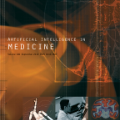This paper introduces a visual-based localization method for autonomous vehicles (AVs) that operate in the absence of any complicated hardware system but a single camera. Visual localization refers to techniques that aim to find the location of an object based on visual information of its surrounding area. The problem of localization has been of interest for many years. However, visual localization is a relatively new subject in the literature of transportation. Moreover, the inevitable application of this type of localization in the context of autonomous vehicles demands special attention from the transportation community to this problem. This study proposes a two-step localization method that requires a database of geotagged images and a camera mounted on a vehicle that can take pictures while the car is moving. The first step which is image retrieval uses SIFT local feature descriptor to find an initial location for the vehicle using image matching. The next step is to utilize the Kalman filter to estimate a more accurate location for the vehicle as it is moving. All stages of the introduced method are implemented as a complete system using different Python libraries. The proposed system is tested on the KITTI dataset and has shown an average accuracy of 2 meters in finding the final location of the vehicle.
翻译:本文介绍了在没有任何复杂的硬件系统但只有一台相机的情况下运行的自动车辆的视觉定位方法。视觉定位是指根据周围区域的视觉信息寻找物体位置的技术。本地化问题多年来一直引起关注。然而,视觉定位在运输文献中是一个相对较新的主题。此外,在自主车辆的背景下,这种类型的本地化的不可避免的应用要求运输界特别注意这一问题。本研究报告建议了一种两步本地化方法,这需要地理标记图像数据库和在车辆上安装的照相机,在车辆移动时可以拍照。第一步是图像检索使用SIFT本地特征描述器为车辆找到使用图像匹配的初始位置。下一步是利用Kalman过滤器来估计车辆移动时的更准确位置。采用的方法的所有阶段都是使用不同的Python图书馆作为完整的系统实施。在KITTI数据集上测试了拟议的系统,并显示在寻找车辆最后位置时的平均精确度为2米。




